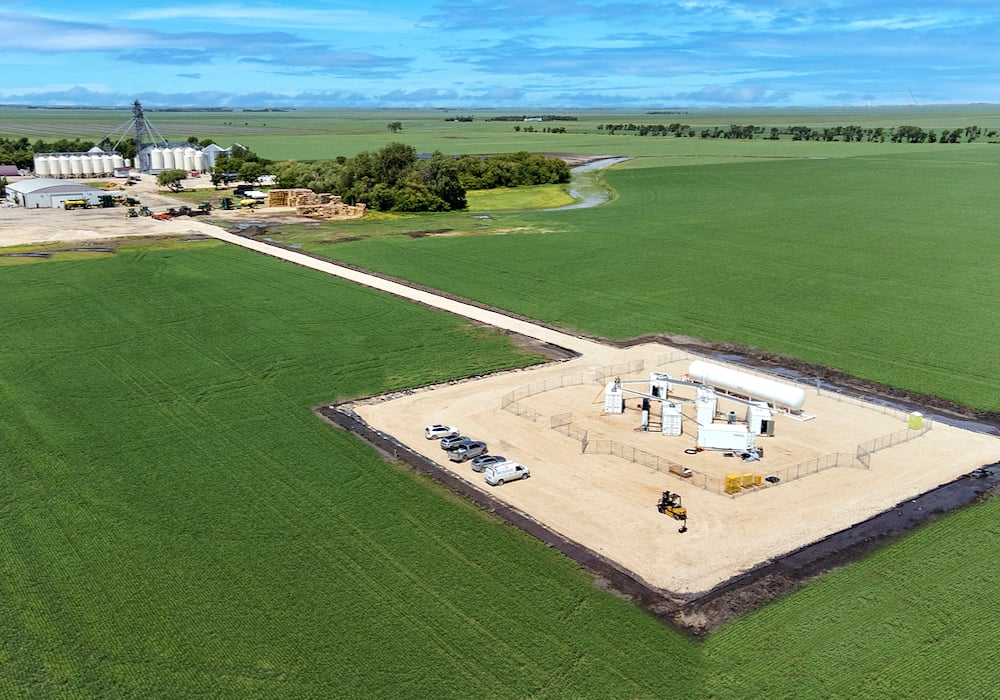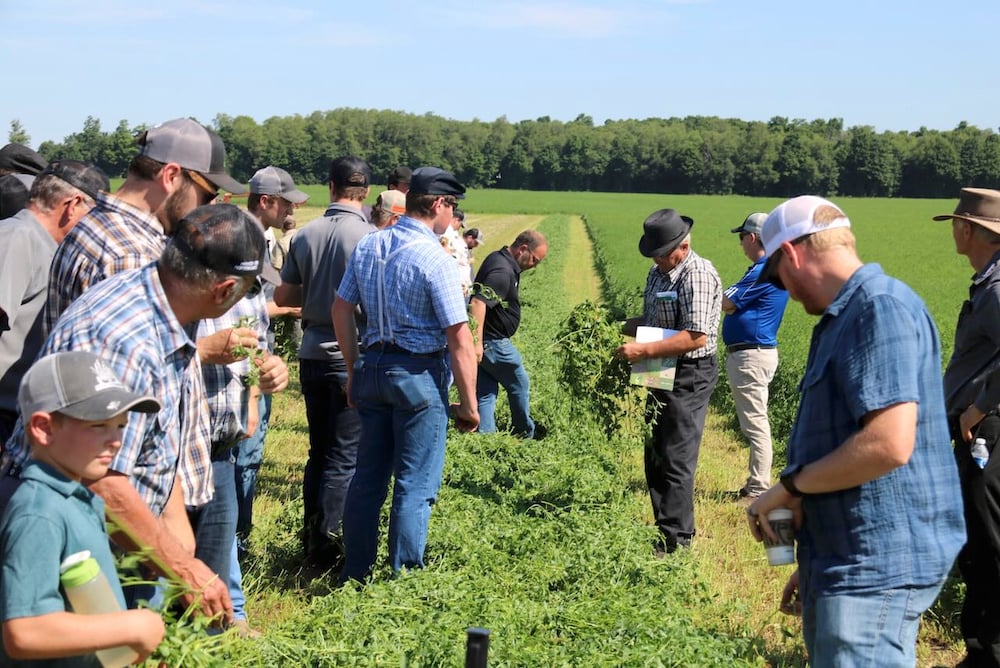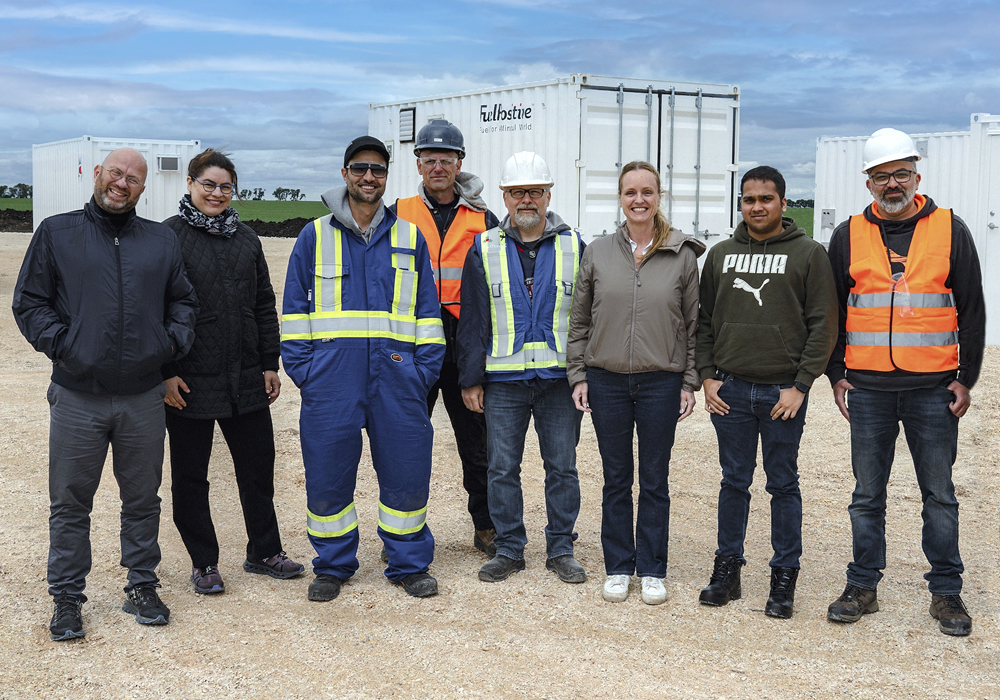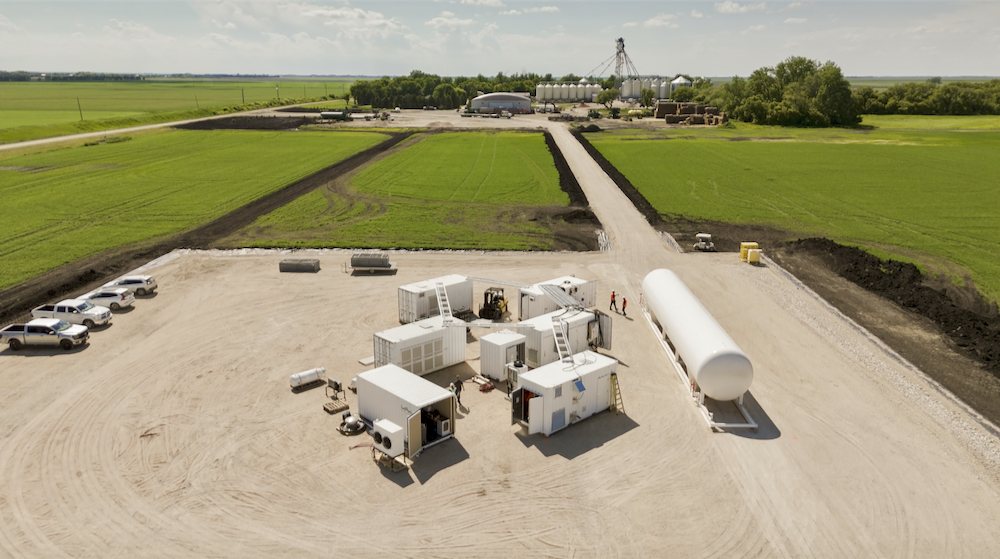Green, farm-produced anhydrous ammonia in the home stretch

Glacier FarmMedia – After two years of delays, the world’s first on-farm green ammonia plant is weeks away from producing fertilizer.
Read Also


Ontario Forage Expo offers first-hand look at haying equipment operating in the field
More than 30 pieces of equipment were demonstrated at the July 4 expo, from cutting to tedding, raking, merging, baling,…
In mid-June, Ontario clean energy company FuelPositive announced that pieces were in place for its pilot project at R&L Acres near Sperling, Man.
Why it matters: Aside from reducing emissions, producing anhydrous ammonia on the farm could shield farmers from volatile markets and supply issues.
“We did the site prep this year right after seeding,” said Curtis Hiebert, who owns R&L Acres along with his wife, Tracy. “The system’s here now. Everything is here to make ammonia. They’re just connecting everything together and we’re waiting for (Manitoba) Hydro to get power in for us. That’s where we stand right now.”


photo:
FuelPositive
The Hieberts reached out to FuelPositve about three years ago. The system was initially planned to be operational by late summer 2022. In December of that year, FuelPostive said the new goal was January 2023 and anticipated shipping the unit to the farm in February.
The project was held up by pandemic-related supply chain issues, according to FuelPositive.
“Because the first system has components from a lot of different third-party suppliers, either built for us or off the shelf, we’ve been suffering from supply chain challenges like every other manufacturer,” said Ian Clifford, president and co-founder of FuelPositive. “It’s just the logistics of getting things in place.”
Clifford added that the company wants to get this installation right as the first proof of concept in real-world conditions. The ammonia plant is a high-pressure, high-temperature system, and significant time was spent ensuring safety.
“It’s an incredible moment for us,” said Clifford. “It’s the culmination of the last four years of work and a tremendous amount of planning and co-ordination with Curtis and his team, Manitoba Hydro and all the other stakeholders. There’s been a lot of moving parts coming together.”
How it works
The system works by electrolysis, taking water and electricity from an identified sustainable source, in this case hydroelectric. It splits water molecules into hydrogen and oxygen. Oxygen can be stored for other uses or vented. Nitrogen is extracted from the air.
Nitrogen and hydrogen are then combined under pressure and temperature and forced into FuelPostive’s ammonia synthesis module. Within that module, the two gases are converted via a catalyst into NH3, anhydrous ammonia. From there, the ammonia is moved into storage tanks where farmers can pull up, fill tanks and head to the field.


photo:
FuelPositive
Keeping it competitive
For Hiebert, potential savings were a big draw. On-farm ammonia would mean consistent supply and freedom from fluctuations in the fertilizer market.
Prices in late 2022, when the system was originally supposed to produce, gave proof to that reasoning.
Natural gas prices spiked in the wake of the Russian invasion of Ukraine. Fertilizer prices followed suit. With green ammonia, energy is the only operating cost.
Clifford said that, assuming electricity cost of 5.5 cents per kilowatt hour, the unit being installed on R&L Acres can produce green anhydrous ammonia for roughly $600-$700 per tonne, a decent savings over conventional, or “grey” ammonia at current market prices, although it does fall within prices seen over the past five years.
Consistency comes with its own value, according to the company.
“One of the big reasons farmers want to have our systems on farm is to create that stability around both costs and supply,” said Clifford.
Hiebert reported paying about $600 a tonne for anhydrous in 2017 and a little over that in 2018 and 2019. But in 2023, he was paying nearly $1,400. The market has mellowed slightly since then.
“I don’t want to be making anhydrous for more money than I can buy it. That, to me, is a very important component of it,” the farmer said. “But there are also delivery fees. If we have the anhydrous on site, we can just bring it to the field ourselves. So, that’s a handy thing.”
While environmental sustainability appeals to Hiebert, he won’t sacrifice his livelihood for it.
“No one’s paying me to be ‘green.’ When we sell our grain, we’re competing against the world, and most of the world could not care less about that. We’re not going to go bankrupt trying to be ‘green.’”
Nuts and bolts
This is a trial run for the new technology, so FuelPositive owns the equipment on Hiebert’s farm. The farm couple provided site preparation and a hydro and water hookup.
“Our responsibility is the maintenance and operation of the equipment,” said Clifford. “Curtis will pay the operating costs of the equipment. But ultimately, our business model is to sell systems to farmers that will reside on their property and we will maintain those systems based on a cost per tonne agreement.”
The retail cost of the 300-tonne per year plant on the Hiebert’s farm would be $1.2 million. For a 500-tonne per year setup, the price tag would ramp up to $4.5 million.
“We’ve got a lot of interest and support from Farm Credit Canada looking at how to help farmers finance this type of purchase,” said Clifford.
Manitoba advantage
FuelPositive chose Manitoba as its testing ground due to the abundance of sustainable electricity. The province’s low-cost, hydroelectric-based energy grid was a good fit.
It also made sense from an agricultural angle. Anhydrous ammonia is a common fertilizer in Manitoba.
That’s not necessarily true in other jurisdictions, where that market share is often filled by urea or UAN.
As such, FuelPositive’s business model focuses specifically on Manitoba as an initial market.
“There’s such perfect alignment on a number of different levels,” said Clifford. “The grid is green, the cost of electricity is low and the number of farmers who utilize ammonia-based fertilizers is very significant. So, there’s lots of potential customers in the province.”
Those potential customers want to see the product in action.
“There’s dozens of farmers now who have indicated an interest in purchasing the system but they want to see it working, right? They want to talk to the Hieberts, not to us.”
Clifford said it is important that a well-known and respected Manitoba farming operation is testing the system.
“They’re a state-of-the-art, high-tech digital farm; they’re early adopters and certainly champions of technology, so the mix was perfect. So from our perspective, this demonstration system is a very high-profile demonstration system as a result of the Hieberts and their relationships in the province.”
The company plans to set up batch manufacturing in Manitoba and also intends to build a large-scale mass production facility in the province within the next two or three years.
Source: Farmtario.com

